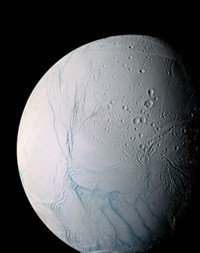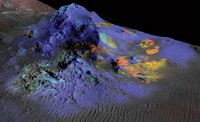Advertisement
Grab your lab coat. Let's get started
Welcome!
Welcome!
Create an account below to get 6 C&EN articles per month, receive newsletters and more - all free.
It seems this is your first time logging in online. Please enter the following information to continue.
As an ACS member you automatically get access to this site. All we need is few more details to create your reading experience.
Not you? Sign in with a different account.
Not you? Sign in with a different account.
ERROR 1
ERROR 1
ERROR 2
ERROR 2
ERROR 2
ERROR 2
ERROR 2
Password and Confirm password must match.
If you have an ACS member number, please enter it here so we can link this account to your membership. (optional)
ERROR 2
ACS values your privacy. By submitting your information, you are gaining access to C&EN and subscribing to our weekly newsletter. We use the information you provide to make your reading experience better, and we will never sell your data to third party members.
Physical Chemistry
Enabling Chemistry Experiments In Space
by Jyllian N. Kemsley
April 19, 2010
| A version of this story appeared in
Volume 88, Issue 16

The nanosatellite isn’t exactly “nano,” but it is small: It is roughly the size of a shoebox and weighs about 5.5 kg, said Andrew L. Mattioda, deputy chief of the astrophysics branch at the National Aeronautics & Space Administration (NASA) Ames Research Center, in Moffett Field, Calif. Mattioda described the project at the ACS national meeting in March. O/OREOS is part of a NASA Astrobiology Institute program to develop payloads with off-the-shelf, modular technology and make them small enough to be easily piggybacked onto other missions.
O/OREOS includes two 10‑cm3 experimental cubes. The biology cube contains two microbes, Halorubrum chaoviatoris and Bacillus subtilis, that will be rehydrated and fed at three different time points in space to evaluate the effects of microgravity and space radiation on the organisms.
The chemistry cube contains four organic compounds, each encased in four different environments of interest for studying chemistry in the universe: the compound alone in interstellar space, a mineral setting similar to a dust grain or a lunar surface, an atmosphere akin to that on Mars, and a water environment. To observe the effects of sunlight and cosmic radiation on the compounds, researchers will monitor them with a spectrometer covering ultraviolet, visible, and near-infrared wavelengths, from 200 to 1,000 nm.
Each experimental cell is a small cylinder about 9 mm across and capped with MgF2 and Al2O3 windows. The windows can be coated with, for example, a silica layer to mimic the mineral nature of a lunar environment. The “wet” cell incorporates a wire mesh ring with a hydrated salt to maintain the water vapor inside the cell.
The compounds chosen for O/OREOS are isoviolanthrene, anthrarufin, tryptophan, and iron tetraphenylporphyrin. They were picked, Mattioda said, to represent what might be found in environments astrobiologists want to emulate, but narrowing down the chemical library to a mere four molecules wasn’t easy. Among the considerations was that the molecules had to be robust enough to sit for months without sublimating or otherwise degrading while awaiting a flight. The researchers also wanted chemicals with spectral features that they could easily monitor.
Although O/OREOS is technically a demonstration mission, Mattioda and colleagues expect it will also yield some interesting scientific results. The satellite is currently scheduled to lift off on an Air Force rocket from Alaska in August. “We’re testing the viability of low-cost spaceflight science experiments,” Mattioda said. If the technology works, it could be used to do chemistry experiments on future missions to the moon or Mars.





Join the conversation
Contact the reporter
Submit a Letter to the Editor for publication
Engage with us on Twitter